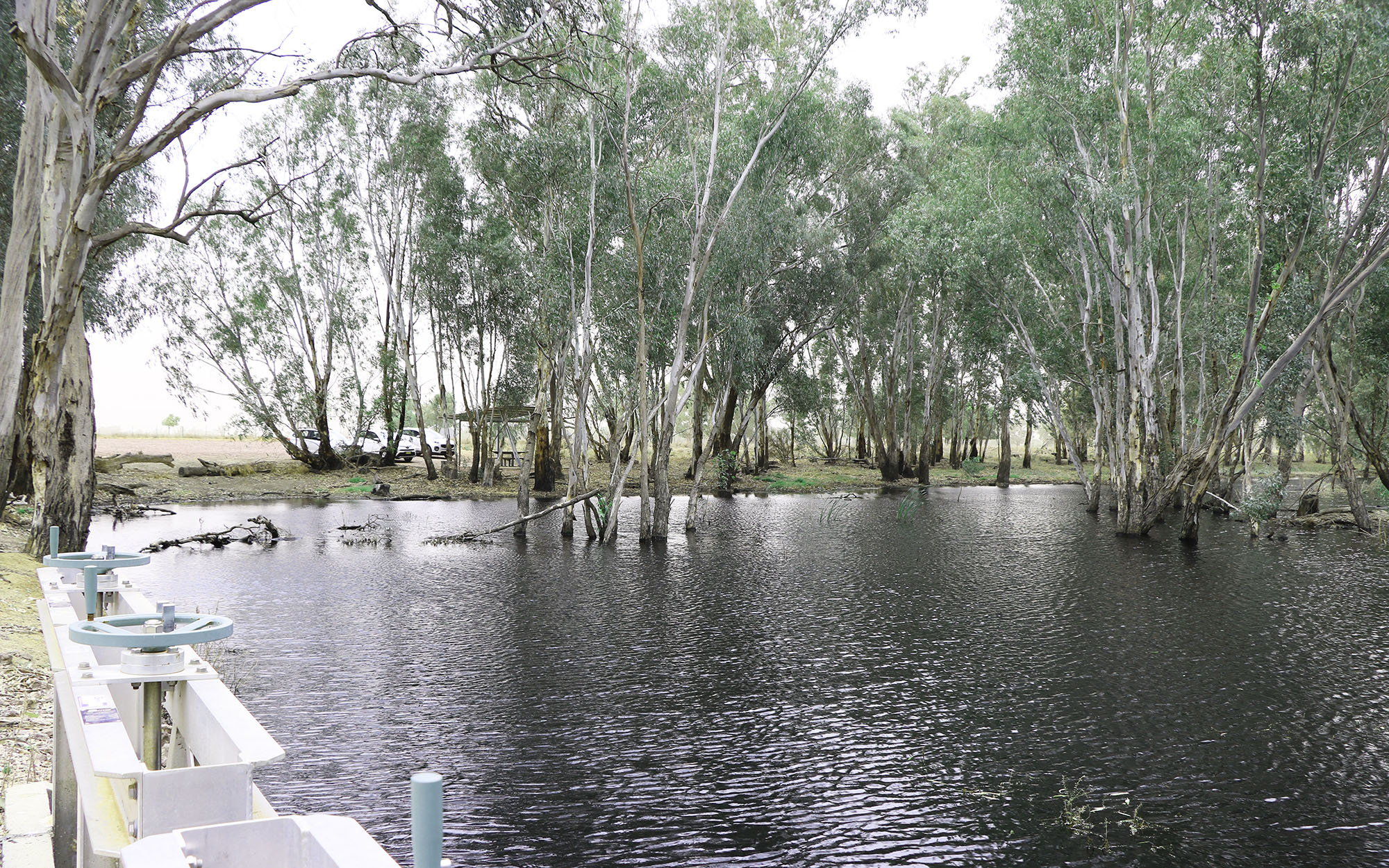Learn about series
A series of information pages on the basics of water.
What is connectivity?
River connectivity is a measure of how much the water in a river is connected along its entire length. It can also be a measure of how connected a river is to surrounding floodplains and wetlands, or to the underlying groundwater.
When a river is connected along its length, it’s called longitudinal connectivity. Connection between a river and the wetlands and floodplains either side of it is called lateral connectivity.
Connectivity helps to maintain healthy ecosystems, move nutrients and sediments down the river, improve water quality and allow native fish and other organisms to move around. River connectivity also helps ensure that downstream water users have access to water for basic landholder rights.
Water for the environment and river connectivity
Healthy rivers are the lifeblood of inland New South Wales, energising the landscape and supporting both economic and environmental outcomes.
Why is it important?
Connectivity affects the water quality and conditions in the river. A river with low connectivity along its length may break into a series of pools, which are likely to become warmer, and have lower dissolved oxygen and higher salt content than flowing river water.
These changes affect the plants, animals and insects which rely on river water. A disconnected river may not have space for fish to disperse or breed, while low oxygen levels can kill animals if the levels are too low to breathe. Warmer waters can also stress plants and animals.
Rivers which are disconnected from the surrounding environment can also have effects on plants and animals which rely on that environment. Rivers which are disconnected from local groundwater may have reduced flow or water quality issues without groundwater to refresh them. These cause problems for plants, animals, and humans which rely on these water sources.

What affects connectivity?
The climate and human activities can both affect river connectivity.
Wetter conditions tend to increase connectivity down the length of the river, across surrounding wetlands and floodplains, and with underlying groundwater.
Dryer conditions, on the other hand, can mean there isn’t enough water to maintain these connections.
Human activities, such as extracting water, building levees, or otherwise altering riverine environments, can also reduce river connectivity.
What does the department do to help?
Many of our rivers have been changed over time to provide water for towns, industry and growing food. This affects how much water flows in our rivers, and also changes the timing of flows, interrupting the natural patterns of higher pulses and flows. These changes can interfere with river connectivity.
The NSW government uses water for the environment as well as water rules to help improve river connectivity, as well as the water quality and condition. This in turn helps the plants and organisms which rely on rivers to stay healthy, and to feed, breed and spread out.
Learn more about water for the environment and connectivity at: River connectivity
The department is taking action to improve water flowing across connected catchments at important times to improve downstream outcomes. Learn more at: Northern Basin Connectivity Program
